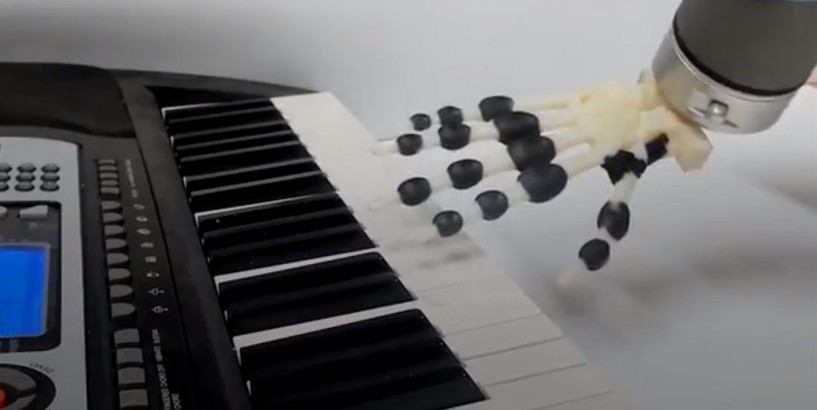This robot hand can play simple musical phrases like Jingle Bells on the piano by moving its wrist. Made from soft and rigid materials, it is meant to replicate a human hand with bones and ligaments, minus the muscles or tendons. Researchers found that a surprisingly wide range of movement was still possible.
Scientists at Cambridge University have developed a 3D-printed robotic hand which can play simple musical phrases like Jingle Bells on the piano by moving its wrist.
While the robot hand is not going to be playing Beethoven’s Moonlight Sonata anytime soon, it goes a long way toward mimicking the complex dexterity of the human body.
“Smart mechanical design enables us to achieve the maximum range of movement with minimal control costs: we wanted to see just how much movement we could get with mechanics alone,” said Josie Hughes, Cambridge Department of Engineering and lead author on the project.
Made from soft and rigid materials, the robot hand is meant to replicate a human hand with bones and ligaments, minus its muscles or tendons.
Using this ‘passive’ movement, in which the fingers cannot move independently, the researchers found that a surprisingly wide range of movement was still possible. The robot was able to mimic different styles of piano playing without changing the material or mechanical properties of the hand.
The results , reported in the journal Science Robotics, could help inform the design of robots that are capable of more natural movement with minimal energy use.
“We can use passivity to achieve a wide range of movement in robots: walking, swimming or flying, for example,” said Hughes. “Smart mechanical design enables us to achieve the maximum range of movement with minimal control costs: we wanted to see just how much movement we could get with mechanics alone.”
Most of today’s advanced robots are not capable of manipulation tasks which small children can perform with ease.
“Piano playing is an ideal test for these passive systems, as it’s a complex and nuanced challenge requiring a significant range of behaviours in order to achieve different playing styles,” said Hughes.
“This approach also reduces the amount of machine learning required to control the hand; by developing mechanical systems with intelligence built in, it makes control much easier for robots to learn.”
Also from Business Insider South Africa:
Disappointing like South one 10 spaceships You disappointment Here Bill









